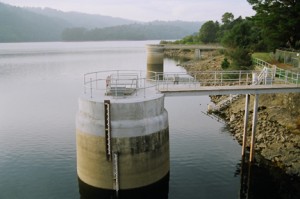Drought could strangle state’s water supply

By Graham Henderson
Staff Writer
California is facing its worst drought in 15 years with water reserves around the state at a fraction of their capacity severely affecting several counties throughout the state, according to a senior state meteorologist.
According to Elissa Lynn, senior meteorologist for the California Water Resources Board, it takes more than just one abnormally dry year to trigger a drought. The central valley counties of San Joaquin, Merced, Madera and Fresno among others have been the hit hardest by California’s drought conditions.
California’s water supply has also been affected by a series of court rulings that have drastically reduced the amount of water allowed to be pumped from the Sacramento-San Joaquin River Delta. The most recent ruling, on Nov. 14, will cause a further reduction of 17 percent, or 1.1 million acre-feet of water per year, according to a Nov. 15 article in the Contra Costa Times.
With all the rulings combined, delta water exports have fallen 65 percent.
Two out of three Californians receive water from the delta, according the Association of California Water Agencies, which represents 450 public water agencies across the state that receive water allocations from the California Water Resources Board.
“The initial allocation was 15 percent,” Lynn said. “That’s one of the impacts statewide.”
San Francisco currently does not receive water allocations from the California Water Resources Board. Eighty-five percent of San Francisco’s water comes from the Hetch Hetchy reservoir in Yosemite, according to Chandra Johnson, spokesperson for the San Francisco Public Utilities Commission. The remaining 15 percent of San Francisco’s water is taken from groundwater. The reservoir is currently at 70 percent of its normal capacity, said Johnson.
While the SFPUC supplies water directly to customers in San Francisco, but it also supplies some of the water for outlying counties. “We supply water to 28 wholesale customers,” said Johnson.
Because SFPUC still has adequate water reserves, their efforts so far have been focused on voluntary reduction. “Most of our outreach is to [individual] customers,” said Johnson. “We have worked with our local customers doing a voluntary 10 percent cutback, followed up with a public education campaign.”
Last year, the SFPUC changed the language of the ads to make it clearer to customers that “we are in a drought,” said Johnson. Since the change, San Francisco residents have cut back water use by about 15 percent, said Johnson. The SFPUC currently has no plans to require water rationing.
If winter weather lasts all the way through April, Lynn is hopeful the reservoirs will at least remain at their current levels. However, rain alone is not enough.
“If the ground is really dry, you won’t get runoff,” Lynn said. “Snow is more important for filling the reservoir.”
Reservoirs are filled in the spring when the snowpack melts. The frozen ground does not absorb much water, which allows more water to flow into streams and reservoirs, Lynn said.
Scientists are hesitant to immediately blame the drought directly on global warming.
Professor Darrell Hess, chair of the earth science department at City College, said that it is still too early to blame the drought on climate change, but said that the increase in droughts are consistent with predictions associated with global warming. Effects of climate change on weather can only be confirmed by looking at long term trends.
Lynn agreed. “It’s too soon to tell, but in terms of climate change, we tend to see more extremes,” she said.
City College has taken steps to decrease its water use. “With the waterless urinals we’ve installed, water usage is down,” said James Keenan, director of buildings and grounds.
The school is also in the process of planting native plants for landscaping. Once the roots have taken, the plants will not require any water, Keenan said.
Some students at City College were aware of the drought.
“I’ve lived here all my life and I can remember times when the drought was more severe. This year isn’t that bad,” said City College student Sydney Pierce.
“We need more rain,” said music major Peter Tavaseiff. “It hasn’t rained that much.”
Water Saving Tips
Tip #1
While showering, be efficient by brushing your teeth while you shower. Turn the water off while washing your hair.
Tip #2
Car washes recycle water, so have your car cleaned by the pros.
Tip #3
Plants can die from over-watering, so water only as needed. If you want plants, consider a drought-resistant species.
Tip #4
Wash your dishes in a wash tub instead of leaving the water running. Once all the dishes are scrubbed, refill the tub with clean water to rinse.
Tip #5
Put food coloring in your toilet tank and let it sit overnight. If the water in the bowl is colored in the morning, your toilet is leaking. Make the landlord fix it.
Tip #6
Garbage disposals require a lot of water. Compost your leftover scraps instead.
Tip #7
Reduce the amount of dishes by using only one cup throughout a day for drinking water.
Tip #8
The toilet is not a trash can. Throw tissues, cigarette butts, and other waste in the trash can instead to reduce the number of flushes per day.

Comments are closed.